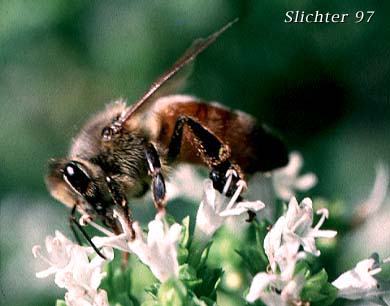
Food Chains & Food Webs
Ecology: Study of relationships between the environment & the organisms living there.
Habitat: The environment in which a species lives or the location of a live organism.
Population: Several to many members of the same species occupying the same area.
Community: A group of populations living together & interacting with each other in an area.
Ecosystem: A community and its abiotic (nonliving) environment.
1) Autotroph- Organisms using an external energy source to produce organic matter from inorganic raw materials (producers). Light is the external energy source of most food chains.
2) Producer- 1st organism in the food chain. Makes its own food (Photosynthesis or chemosynthesis).
3) Heterotroph: Organisms that use energy in organic matter obtained (eaten) from other organisms.
Types of Heterotrophs:
4) Consumers- Feed on other living organisms.
5) Detritivores- Feed on dead organic matter by ingesting it. (Ex.- dung beetles, earthworms, maggots, etc.)
6) Saprotrophs- Feed on dead organic matter by secreting digestive enzymes into it & absorbing the products of digestion. (Ex- Fungi: mold, mushrooms, bacteria, some yeast) (These were originally known as decomposers.)
Types of Consumers:
7) Herbivores: Eat primarily plant materials.
Ex.-
8) Carnivores: Eat primarily animal tissues.
Ex.-
9) Omnivores: Eat roughly equal amounts of plant & animal materials.
Ex.-
10) Food Chain: Sequences of feeding relationships where each member in the sequence feeds on the previous one. Arrows indicate direction of energy flow.
12) Trophic Level: The position an organism occupies in the food chain. The level may vary in different chains.
13) Food Web: Diagram showing complex feeding relationships within a community. Arrows indicate direction of energy flow.
14) Ten Percent Law: Energy is wasted and lost as heat at each level. Only approximately 10% of energy flows from each level to the next level.
All nutrients flow through food chains and are recycled.